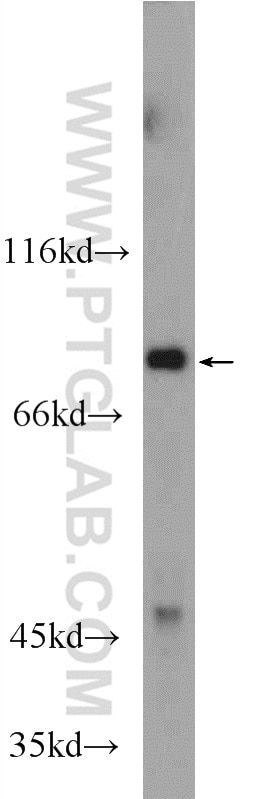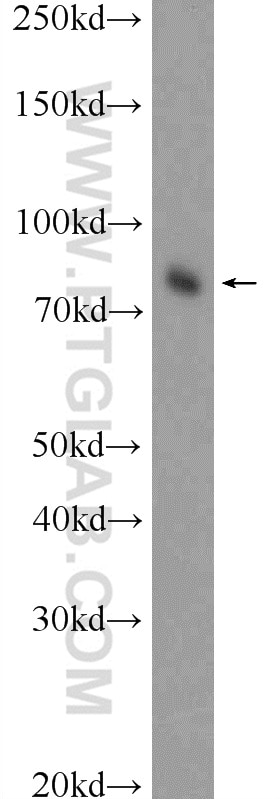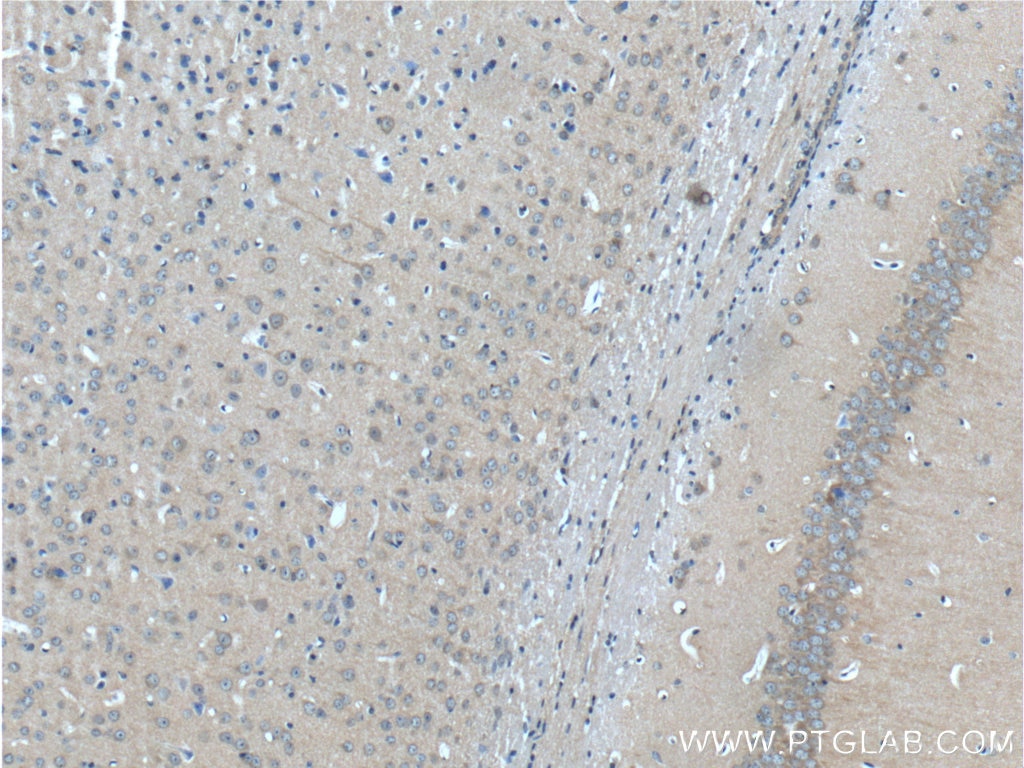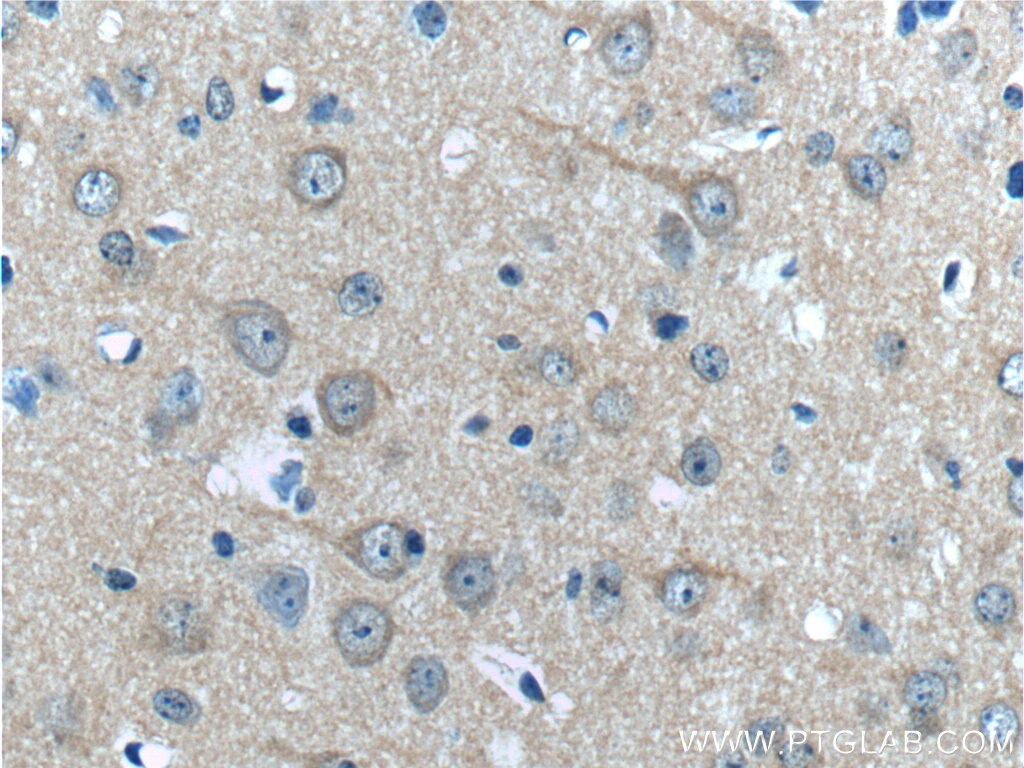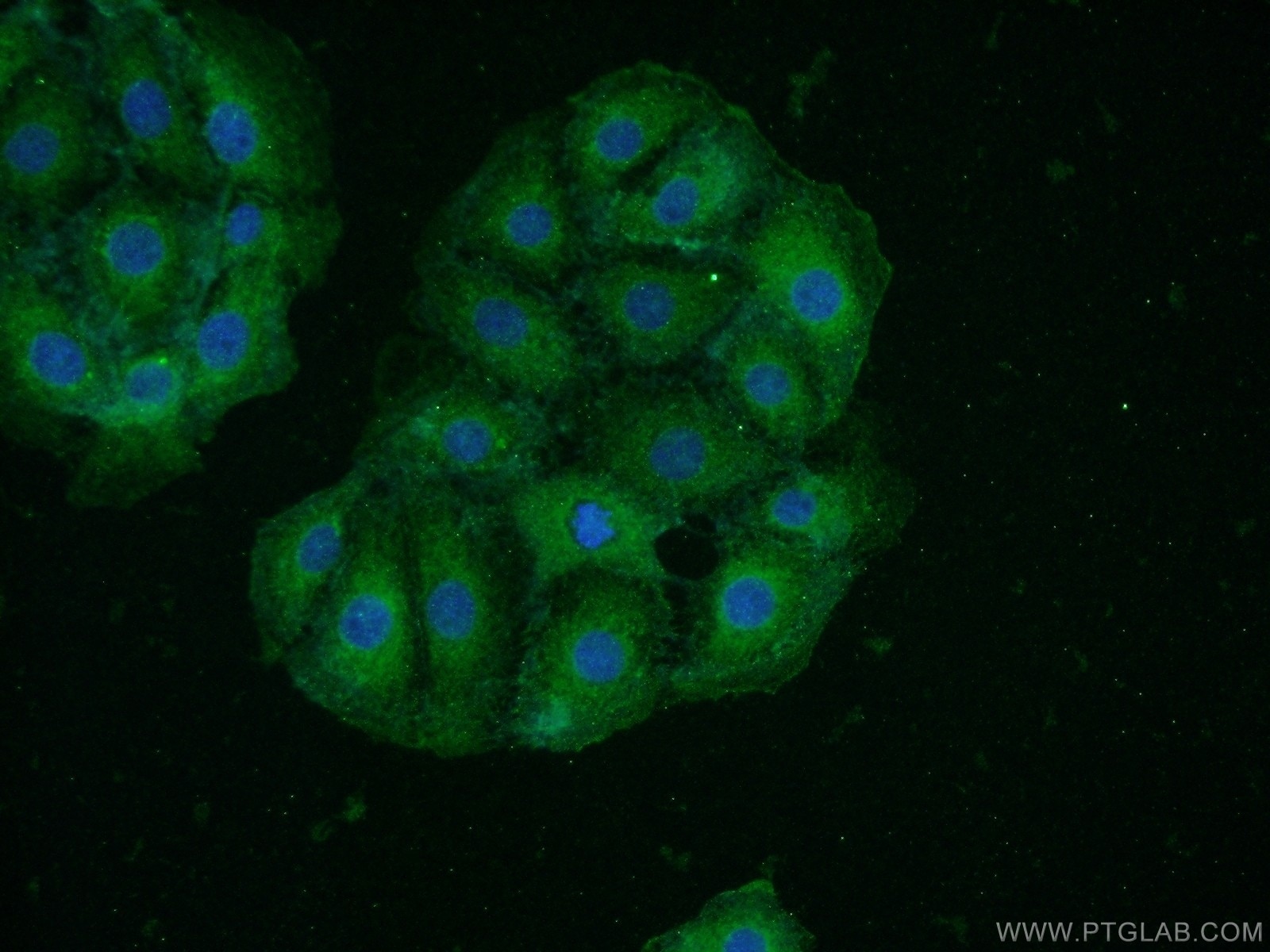Anticorps Polyclonal de lapin anti-HAP1
HAP1 Polyclonal Antibody for WB, IHC, IF/ICC, ELISA
Hôte / Isotype
Lapin / IgG
Réactivité testée
Humain, souris
Applications
WB, IHC, IF/ICC, ELISA
Conjugaison
Non conjugué
N° de cat : 25133-1-AP
Synonymes
Galerie de données de validation
Applications testées
| Résultats positifs en WB | tissu cérébral humain fœtal |
| Résultats positifs en IHC | tissu cérébral de souris il est suggéré de démasquer l'antigène avec un tampon de TE buffer pH 9.0; (*) À défaut, 'le démasquage de l'antigène peut être 'effectué avec un tampon citrate pH 6,0. |
| Résultats positifs en IF/ICC | cellules SH-SY5Y |
Dilution recommandée
| Application | Dilution |
|---|---|
| Western Blot (WB) | WB : 1:500-1:1000 |
| Immunohistochimie (IHC) | IHC : 1:20-1:200 |
| Immunofluorescence (IF)/ICC | IF/ICC : 1:20-1:200 |
| It is recommended that this reagent should be titrated in each testing system to obtain optimal results. | |
| Sample-dependent, check data in validation data gallery | |
Applications publiées
| WB | See 4 publications below |
| IHC | See 1 publications below |
| IF | See 1 publications below |
Informations sur le produit
25133-1-AP cible HAP1 dans les applications de WB, IHC, IF/ICC, ELISA et montre une réactivité avec des échantillons Humain, souris
| Réactivité | Humain, souris |
| Réactivité citée | Humain, souris |
| Hôte / Isotype | Lapin / IgG |
| Clonalité | Polyclonal |
| Type | Anticorps |
| Immunogène | HAP1 Protéine recombinante Ag17705 |
| Nom complet | huntingtin-associated protein 1 |
| Masse moléculaire calculée | 671 aa, 76 kDa |
| Poids moléculaire observé | 75-80 kDa |
| Numéro d’acquisition GenBank | BC156728 |
| Symbole du gène | HAP1 |
| Identification du gène (NCBI) | 9001 |
| Conjugaison | Non conjugué |
| Forme | Liquide |
| Méthode de purification | Purification par affinité contre l'antigène |
| Tampon de stockage | PBS with 0.02% sodium azide and 50% glycerol |
| Conditions de stockage | Stocker à -20°C. Stable pendant un an après l'expédition. L'aliquotage n'est pas nécessaire pour le stockage à -20oC Les 20ul contiennent 0,1% de BSA. |
Informations générales
HAP1 (Huntingtin-associated protein 1) was originally identified as neuronal protein that specifically associates with HTT/huntingtin and the binding is enhanced by an expanded polyglutamine repeat within HTT. HTT is expressed ubiquitously, while HAP1 is expressed predominantly in the central nervous system (CNS). Both HTT and HAP1 participate in intracellular trafficking. HAP1 is involved in the vesicular transport, gene transcription regulation, membrane receptor trafficking and other functions such as calcium release and protein aggregation (PMID: 19262167).
Protocole
| Product Specific Protocols | |
|---|---|
| WB protocol for HAP1 antibody 25133-1-AP | Download protocol |
| IHC protocol for HAP1 antibody 25133-1-AP | Download protocol |
| IF protocol for HAP1 antibody 25133-1-AP | Download protocol |
| Standard Protocols | |
|---|---|
| Click here to view our Standard Protocols |
Publications
| Species | Application | Title |
|---|---|---|
Toxicology Methamphetamine inhibits huntingtin-associated protein 1-mediated tyrosine receptor kinase B endocytosis resulting the neuroprotective dysfunction of brain-derived neurotrophic factor | ||
FEBS Open Bio Proximity-dependent biotinylation reveals an interaction between ubiquitin-specific peptidase 46 and centrosome-related proteins | ||
Mol Biol Rep Huntingtin-associated protein 1 is a potential tumor suppressor for gastric cancer | ||
Nat Commun Systematic HOIP interactome profiling reveals critical roles of linear ubiquitination in tissue homeostasis |
